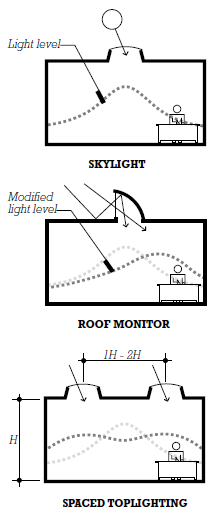
Designing with Daylight in Mind
By Nate Rogers, E.I.T.
Daylight is a good designer’s best friend. Many people often do not realize the importance of good lighting in buildings, but the benefits are extensive. Artificial lighting requires energy, maintenance and can result in unpleasant or flickering lights. Humans instinctually prefer natural light and some research shows spaces with lots of natural light and views of the outdoors can provide health benefits. Not only that, natural light is more energy efficient than artificial lighting in most applications. In our cold New England climate, south facing windows can provide solar heat gain to reduce heating loads. Now let us break down some of the best ways to do maximize the amount of natural lighting:
Building shape and orientation
A building should be oriented with long sides facing south to allow maximum exposure. Building designers should place utilities or corridors in the middle and try to keep living or working areas within 24 feet of the exterior. Higher ceilings can also be helpful for bringing light deeper into a building.
 Sidelighting
Sidelighting
Sidelighting is the most common way to bring natural light into a space. It is important not only to bring as much light into the space as possible, but to provide a consistent light level in the space. To achieve this, consider the following techniques: light shelfs, exterior overhang, reflective sill, secondary source.

Toplighting
Toplighting brings natural light in through skylights or roof monitors. It is best used in either one story buildings or on the top floor of multi-story buildings. Skylights allow natural light to come into the center of a space which can be helpful when creating evenly distributed level of light. Consider using interior reflectors or multiple skylights to optimize this technique. (See graphics)
(All graphics are from The Architect’s Studio Companion by Edward Allen and Joseph Iano.)
More Articles From...
| This Category | Architectural Design, Condominiums, Residential Engineering, Structural Design, Structural Engineering |
| This Author | Nate Rogers, E.I.T. |
